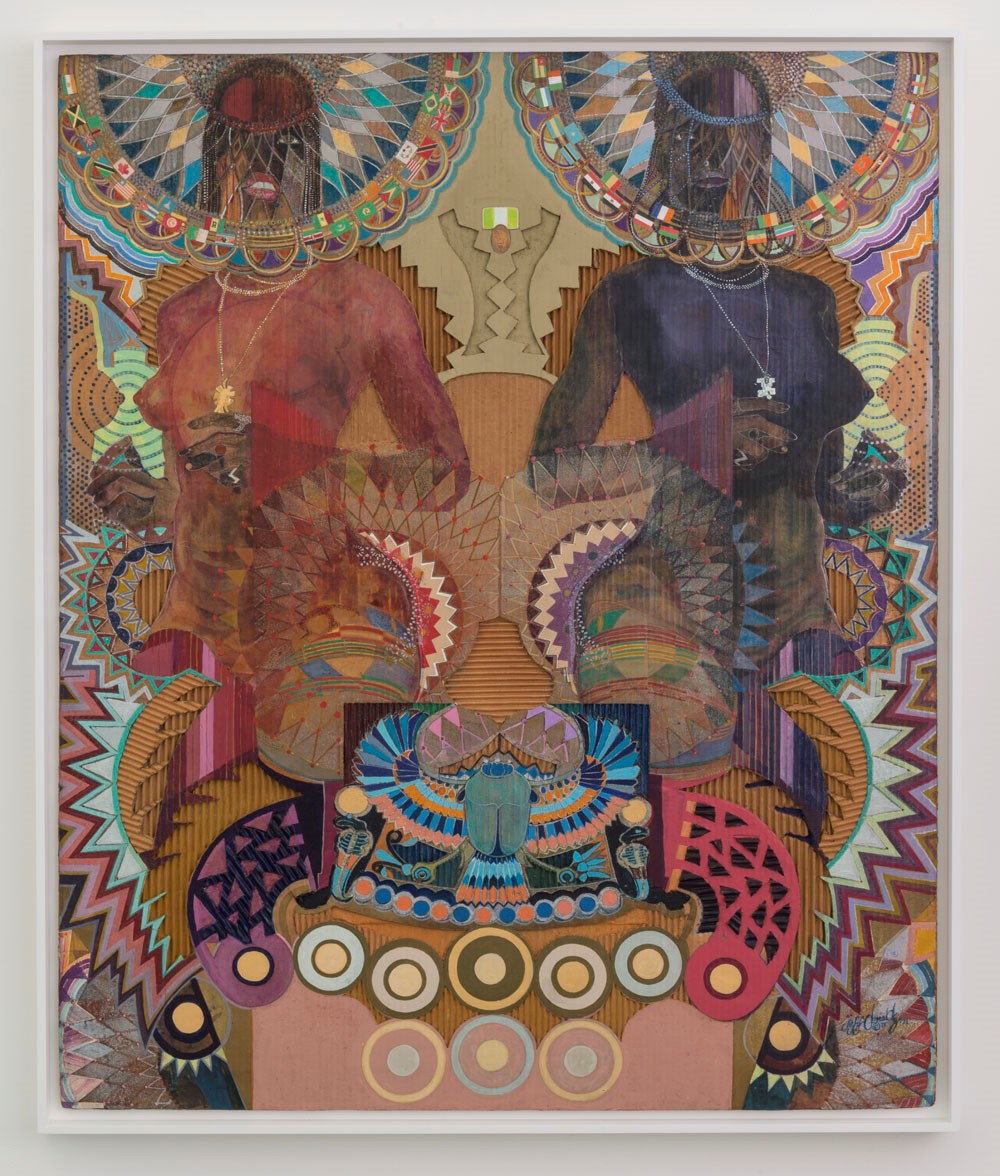Over the course of four decades, Jeff Donaldson (1932-2004) created a substantial body of artworks, including paintings, prints and mixed-media pieces. He also was a community organizer, a scholar who taught at Howard University and served as dean of its College for Fine Arts, an occasional actor with a small role in the 1969 film Medium Cool, and a cultural visionary.
In 1967, he and other African-American artists created the Wall of Respect, a massive Chicago mural featuring images of Malcolm X, Martin Luther King Jr., Marcus Garvey, and other figures. And he was a co-founder of AfriCOBRA (African Commune of Bad Relevant Artists), a movement embracing multiple artistic disciplines, pride in self-identity, and links to African heritage.
The Everson Museum of Art is currently showing Jeff Donaldson: Dig, the first museum retrospective of the artist’s work. It stresses two essential elements in his art: a strong belief in not separating art from community concerns, and an ability to create visually dynamic works.
The exhibit includes several pieces referencing struggles for independence in 1970s Africa. A 1974 work mentions Angola, a nation that gained independence from Portugal but was embroiled in a long war pitting its government against UNITA (the National Union for the Total Independence of Angola), a group backed by the Central Intelligence Agency.
In addition, the show, presented in two galleries, focuses on the artist’s versatility. He created several self-portraits and pieces like “Warriors and Lovers,” a 1968 watercolor in which faint figures appear.
Yet Donaldson was most comfortable stretching out, pushing boundaries on canvas. In a multimedia work, “Victory in the Valley of Eshu,” he combines small photos of two elders, patterns associated with Yoruba culture in West Africa, and a six-legged star, symbolic of freedom for African Americans.
“Paternal Homage,” meanwhile, merges depiction of a small face plus watercolor, metallic foil, paper dollies and cardboard.
And the exhibition looks at work from the 1980s and 1990s. One piece vividly portrays a bull whose side is marked by geometric forms and swirling, multicolored patterns. There’s an illusion of them flowing like a stream or river. That’s a technique Donaldson employed again and again, as he used repetitive patterns to communicate a sense of rhythm.
Not surprisingly, various works document an interest in music and musicians. Thus, trombonists dominate a 1990 piece, and drums and cymbals are integrated into “Message from Tehuti,” an acrylic.
Then there’s “One 4 Bearden,” which pays homage to Romare Bearden, a master of collage. A harpist fades into the overall piece, accompanied by various patterns and Egyptian lettering. It’s best to view the artwork from a distance and then up-close; at first glance, it’s easy to miss the harpist.
Dig also encompasses mixed-media pieces such as “Banda” and “Simba.” “Majorities” shows Donaldson at his very best, playing with colors, dots and V patterns, and two figures whose heads are enveloped by circle shapes in the manner of halos. There’s a sense of the figures being in motion.
Other noteworthy works include “What It Looks Like,” a mixed-media work on linen, and a watercolor, “The Blooming Time.” They round out a large exhibit with several pluses. First, its scope enables viewers to enjoy Donaldson’s work in depth. Second, it supplies text discussing his artistic career and other pursuits but doesn’t drift into the realm of a mini-biography.
Third, it resists facile summaries of his work. From time to time, Donaldson has been described as a protest artist, an inadequate characterization. He certainly created political work like “Visit Azania,” in which a pistol is pointed at a South African official. It was done at a time when Nelson Mandela was in prison and an apartheid regime had committed a host of human-rights violations. However, it’s not the sum total of his artworks.
Finally, the show coincides with the Everson’s own celebration of its 50-year anniversary and history. Long ago, James Harithas, then the museum’s director, invited Donaldson and other members of AfriCOBRA to show their work. That contact resulted in a 1977 group exhibit.
Jeff Donaldson: Dig runs through April 29. The Everson Museum, 401 Harrison St., is open Wednesdays, Fridays and Sundays, noon to 5 p.m.; Thursdays, noon to 8p.m.; and Saturdays, 10 a.m. to 5 p.m. Admission is $8 for adults, $6 for seniors and college students, and free for children under age 12 and members of the U.S. Armed Forces. On every Wednesday, the museum has pay-what-you-wish admission. For information, call (315) 474-6064.
[fbcomments url="" width="100%" count="on"]








